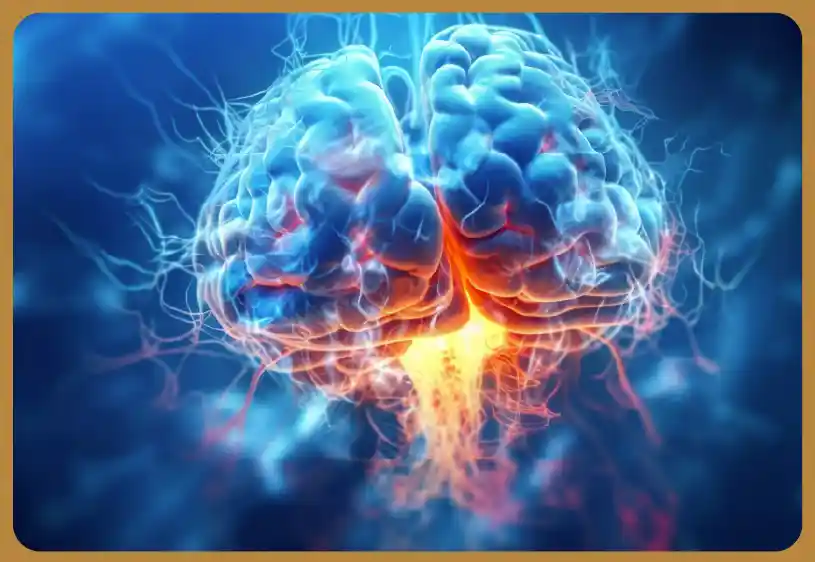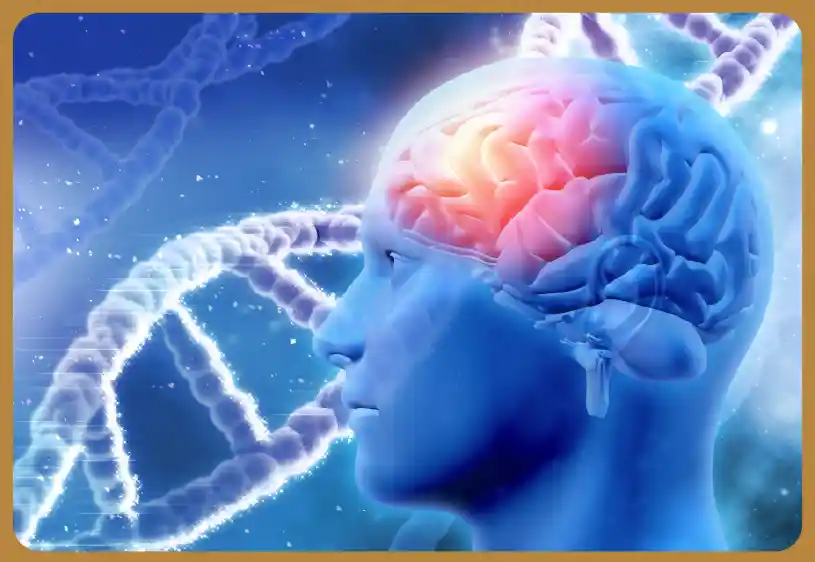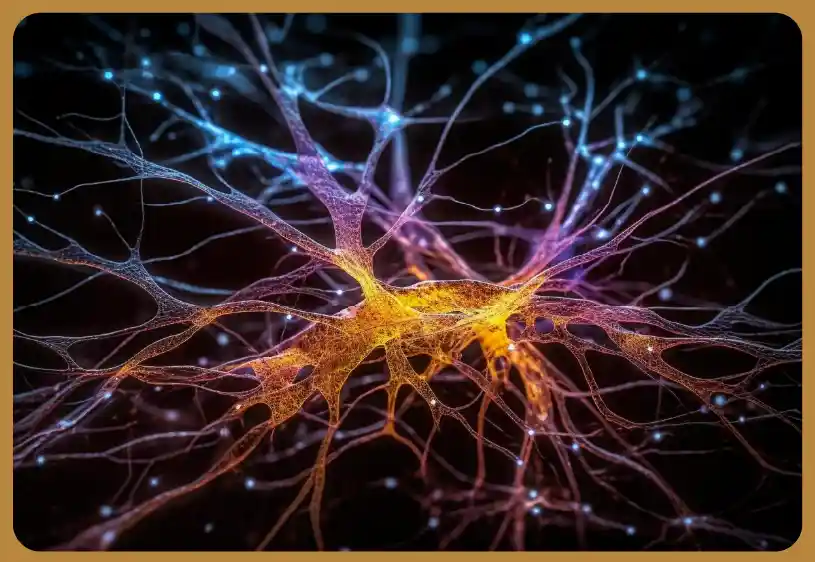
The Brain is truly amazing. But what makes it even more special is neurons, which, unlike other cells in our body, do not regenerate once dead. It makes them super important as well, which is why the concept of neuroplasticity gains importance. What exactly is neuroplasticity and why is it so important? Let us find out.
What Do We Mean By Neuroplasticity?
Neuroplasticity is the brain's amazing ability to change how it works by making new links between neurons all through life. The brain adapts to new knowledge, events, and things through this process. The word "neuroplasticity" originates from "neuro," meaning "relating to the nervous system and the brain," and "plasticity," meaning "changing shape." Neuroplasticity holds that brain form and function may change. Brain anatomy can alter at the synaptic and cellular levels. When you learn something new or modify your environment, new synapses might grow and strengthen. With this flexibility, the brain may adapt and enhance its circuits as needed.
Neuroplasticity happens throughout life, from childhood to old age. Learning is simpler when the brain is more malleable, especially in childhood and adolescence. Adult neuroplasticity allows people to learn, heal from mishaps, and adapt to new conditions. Genes, environment, learning, and experiences affect neuroplasticity. Mental stimulation, new skills, and new environments boost neuroplasticity. Neuroplasticity can be impaired by brain diseases, trauma, and inactivity.
What Are The Different Types Of Neuroplasticity?

The brain can change and restructure in many ways, which is called neuroplasticity. Different forms of neuroplasticity help the brain learn, remember, and heal from traumas. Some major neuroplasticity types:
Synaptic plasticity shows how the brain learns. Synaptic plasticity builds neural connections. This learning and memory effect happens when a synapse is repeatedly triggered, increasing message transmission.
Structure-based plasticity changes neuron structure and neural network connectivity. Dendritic branch addition or removal is a structural alteration. Neuron dendrites branch. This is fundamental to brain network formation through learning and experience. According to controversial but fascinating studies, hippocampal neurogenesis is linked to learning, remembering, and controlling emotions.
Neuroplasticity also involves cortical remapping, which changes how the cortex perceives sensory or movement information. Changing sensory or motor information can remap the sensory and motor cortex. The somatosensory cortex changes with sensory and motor ability, which is intriguing. This displays the brain's response to environmental changes. It illustrates that the brain may compensate for one sensation by improving others. We call this cross-modal plasticity. Incorrect sensory processes cause difficulties that this adaptive system solves. The brain is versatile in maintaining sensory processing.
Most people are familiar with experience-dependent neuroplasticity, which occurs as you learn. This process increases synaptic strength and creates new brain connections to store memories and abilities. This displays the brain's ever-changing response to outside events. Finally, homeostatic plasticity reveals how well the brain maintains neuronal activity. It involves altering synaptic strength to prevent them from being excessively active or quiet to balance brain networks. Understanding various kinds of neuroplasticity helps explain brain change, learning, and recovery.
How Exactly Does Neuroplasticity Work?
Neuroplasticity, also known as brain plasticity or neural plasticity, is the brain's ability to adapt to learning, experiences, and the world. This complex process alters brain molecular, cellular, and network levels.
Biological factors that modify synapse strength—how well neurons communicate—and control neuroplasticity at the molecular level. Long-term potentiation (LTP) and long-term depression (LTD) enable synaptic learning. LTP releases neurotransmitters and sensitizes receptors, strengthening neuronal connections. However, LTD weakens connections by doing the reverse. Several signaling pathways, neurotransmitters, and reactions control these chemical alterations. Neuroplasticity alters neuronal cells. This involves changes in dendritic spine development, quantity, and synaptogenesis or synaptic pruning. Axonal sprouting is another neuron mechanism. New branching from existing axons makes new connections simpler. The brain can adapt to its surroundings owing to anatomical changes.
Neuroplasticity influences brain networks and functional systems, not simply neurons. Experience-dependent neuroplasticity is crucial. It occurs when brain activity patterns repeat. This procedure enhances specialized circuit linkages, making major data processing easier. Experience-driven network reconfiguration is said to be "cells that fire together wire together," referring to Hebbian plasticity. Neuroplasticity persists until adulthood. Adult neurogenesis—developing new neurons in specific brain regions—demonstrates this adaptability. BDNF and other neurotrophic factors help neurons survive, develop, and modify their connections. They also keep the brain flexible throughout life.
What Benefits Does Neuroplasticity Hold?

Neuroplasticity underlies a range of beneficial outcomes for individuals, as it enables the brain to adapt and respond to various experiences throughout life. Here are some key benefits associated with neuroplasticity:
Learning and Memory
Neuroplasticity affect learning and memory at the molecular and cellular levels. LTP releases more neurotransmitters and makes receptors more sensitive, strengthening neuronal connections. Experience-dependent plasticity improves synaptic connections through repeated experiences, making memory storage and retrieval simpler.
Recovery from Brain Injury
Neuroplasticity is notably evident after brain injury. Cortical remapping allows the brain to change neuronal networks, with adjacent regions replacing injured ones. This compensatory mechanism is essential to functional repair and illustrates how the brain can adapt to difficulties.
Cognitive Flexibility
Neuroplastic changes occur in the prefrontal cortex, which controls decision-making and mental processes. New synaptic connections and brain network alterations are included. People can change their strategies to shift cognitive needs.
Skill Acquisition
Cell structure changes as you improve and learn new skills Dendritic spine dynamics and synaptic plasticity strengthen skill-related brain networks. For instance, practicing a motor skill improves motor cortex maps and balance.
Adaptation to Environmental Changes
Neuroplasticity helps the brain adapt to new circumstances, especially sensory input. Events alter sense cortices, affecting how we perceive and process sensory information. Change allows the brain to stay in sync with survival demands.
Emotional Regulation
Neuroplastic changes occur in the amygdala, which processes emotions. Although the amygdala is flexible, emotions may alter. This improves emotional resilience and control.
Rehabilitation in Neurological Disorders
Neuroplasticity of the brain helps neurological disease patients recover. After a stroke or other damage, Constraint-Induced Movement Therapy (CIMT) limits the use of a healthy limb to help the brain restructure and recover faster.
Prevention of Cognitive Decline
Mentally stimulating exercises help you create a cognitive reserve, which prevents cognitive deterioration with age. Regular exercise and a nutritious diet can promote neuroplasticity. This may reduce cognitive deterioration in older persons.
Optimizing Brain Health
Exercise is known to cause neuroplasticity. Neurotrophic substances produced during exercise help neurons develop and synapses alter. Another aspect is social interaction, which stimulates the brain and enhances cognitive health through neuroplastic changes.
Its Never Too Late To Rewire Your Brain
Planning on giving new challenges to your brain to revamp it? Zivanza can help you with that. Our expert psychologists have specialized knowledge in offering customized activities to improve the neuroplasticity of your brain. So, what say?
- Share














